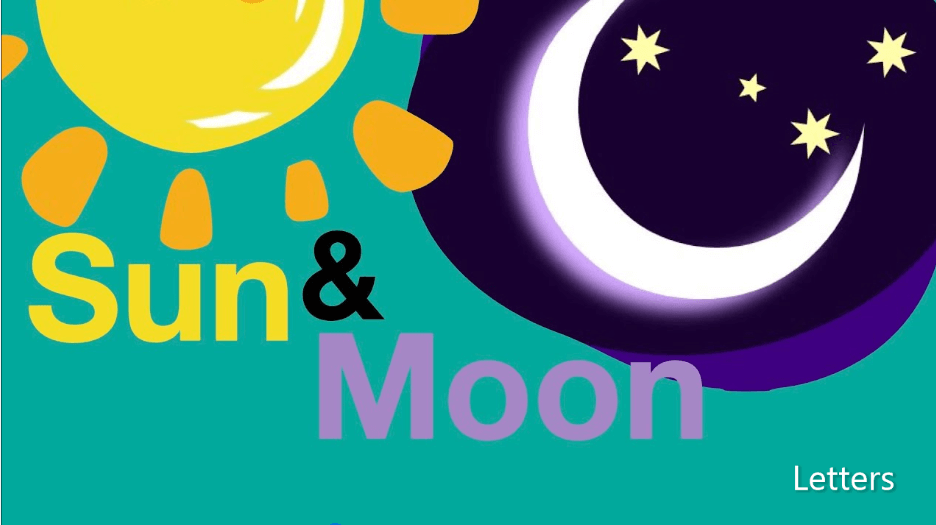Whether you are looking for Sun 🌞 & Moon 🌙 Letters to learn the Arabic Language or Tajweed Rules, you have come to the right place to learn the Arabic Language, the Qur’an and Tajweed.
Learning Arabic Language is the first step for any Muslim to know about the Holy Quran and Islam, as it is the native language of the Quran and our beloved Prophet Muhammad (SAW).
Mishkah Academy Is one of the best online academies that teach Quran Tajweed, Arabic and Islamic Studies in an easy and simple way with native Arab Tutors from the comfort of your home.
Arabic Sun And Moon Letters
Table of Contents
ToggleThere are (28) letters in the Arabic Language. These Arabic letters are divided into 2 groups. One of them is the Sun letters (hrūf shamsiya – حرف شمية) and the other is the letters of the moon (hrūf qamariya – حرف قمرية).
Before we discuss the “Arabic Sun and Moon Letters”, let’s have a quick look at article types first because it is one of the basic grammatical knowledge of definite and indefinite articles in Arabic and can make the whole topic easier.
Many learners of Arabic struggle with the concept of Sun and Moon Letters while learning Arabic on their own to find a thorough explanation. when it shouldn’t be like that. The purpose of this post is to explain it in the most basic and simplest terms possible with examples.
Anyone learning Arabic must apply and understand the rule of the “Sun and Moon Letters” and the definite article that comes after in some words.
We have noticed that mispronouncing the “Sun and Moon Letters” is one of the most common mistakes among beginners learning Arabic or Tajweed. While it doesn’t affect the meanings, it is a noticeable mistake that can bother the ear of native Arabic speakers.
In addition, it is quite basic and easy to grasp and apply, and learners of Arabic have no excuse not observing the Sun letters rule.
What Is Sun And Moon Letters In Arabic
“Moon and Sun letters” in Arabic refer to the letters which when combined with the Arabic definite article “ال” either make the “ل” sound before it silent 🌞, as done by Sun letters; or have no effect on it 🌙, as it is the case with Moon letters.
The Moon letters or (Haruf qamariyah الحروف القمرية ) are the letters that have no impact on the definite article. (ل lam) is always pronounced when it’s followed by any of the Moon letters.
The Sun letters, however, do have an impact on the “ل” before it by making it silent. So, basically the Sun letters are the ones to watch out for.
Why Are They Called Sun & Moon Letters
Let’s take a look at the “Sun Letters” in an Arabic word and see what stands out. The sun is (Ash-Shams – الشمس) in Arabic. Notice that it’s pronounced Ash_shams withour lam sound and not Al_shams with lam sound.
The reason for that is that the letter (ش – sh) in Arabic is one of the Sun Letters. When a definite article and a word that starts with one of the Sun Letters meet, the “ل” in the definite article preceding it becomes silent.
Join thousands of Muslim Families who love learning Quran, Arabic and Islamic Studies from the comfort of their Homes.
Learn Quran, Arabic & Islamic Online

Types Of Articles In Arabic
There are two kinds of articles in Arabic which is Definite and Indefinite. One is called (Nakirah = Indefinite) and the other is (Ma’rifah = Definite). These terms are defined as definite and indefinite articles in English.
Indefinite Article “Nakirah”:
When the words that are “Nakirah” are said, it is not known what or who is being mentioned clearly. Let’s talk about the features of these articles:
- Expresses the word in general terms.
- Ending with Tanween + do not have a definite article “ال”.
- Nakirah in Arabic = nouns used with “a, an” in English.
For Example: (مُدَرِّسٌ = a teacher)
The definite article “Ma’rifah”:
- Clearly known who and what they are talking about.
- “Ma’rifah” is the opposite of “Nakirah”.
- These words are prefixed with a definite article “ال”.
- Its English equivalent is an example of nouns used with “the”.
For Example: اَلْمُدَرِّسُ = (the teacher)
The reason why we explained the subject of “Nakirah & Ma’rifah” is that this is one of the basic grammatical knowledge of “Definite & Indefinite” Articles in Arabic, and in order for us to better understand where the definite article “ال” comes from when talking about the Sun & Moon Letters Arabic rules.
Sun And Moon Letters Chart
| Moon Letters | Moon Words | Sun Letters | Sun Words |
| أ | الأَسد | ت | التَّمر |
| ب | البَشر | ث | الثَّور |
| ج | الجَمل | د | الدُّب |
| ح | الحَرب | ذ | الذُّوذ |
| خ | الخَبر | ر | الرَّاية |
| ع | العَين | ز | الزَّرافة |
| غ | الغَيمة | س | السَّيف |
| ف | الفَرس | ش | الشُّرطة |
| ق | القِطار | ص | الصَّومعة |
| ك | الكِتاب | ض | الضَّباب |
| م | المَطر | ط | الطَّبل |
| هـ | الهَادئ | ظ | الظَّبي |
| و | الوَسط | ن | النَّاقة |
| ى | اليَقطين | ل | اللَّبن |
That’s pretty much it. If you are still confused, please continue to read.
You May Like To Read
Recommended Courses
Arabic Sun And Moon Letters Examples
Arabic Sun Letters
As mentioned earlier, out of the (28) sun and moon Arabic letters, (14) are sun letters. If these sun letters come after after the definite article “ال”, the letter “ا” Alif read by associating it directly with the sun letter with shadda (the consonant letter is read twice).
Someone may ask: What are the 14 sun letters? And the answer: They are as follows:
(ﻥ ﻝ ﻅ ﻁ ﺽ ﺹ ﺵ ﺱ ﺯ ﺭ ﺫ ﺩ ﺕ)
[t / th / d / y / r / g / s / sh / r / z / i / y / n / l]
Sun Letters Arabic Examples:
Listed below are some Sun letters Arabic examples:
(اَلشَّمْسُ ⇨ the sun)
(اَلرَّجُـلُ ⇨ the man)
(اَلزَّهْـرَةُ ⇨ the flower)
(اَلطَّـالِبُ ⇨ the student)
Arabic Moon Letters
The other (14) ones out of the 28 Arabic “Sun & Moon Letters” in the Arabic are called “Moon letters” “حروف قمرية”. The most important feature of Moon Letters are that, unlike the “Sun Letters”, the letters Alif “ا” and Lam “ل” are pronounced clearly.
( هـ ﻱ ﻭ ﻡ ﻙ ﻕ ﻑ ﻍ ﻉ ﺥ ﺡ ﺝ ﺏ أ)
[a / b / c / h / k / p / g / q / s / k / m / e / f / j]
Moon Letters Arabic Examples:
Listed below are some Moon letters Arabic examples:
(الكِتاَبُ ⇨ the book)
الأبُ ⇨ the father)
الجَمَلُ ⇨ the camel)
(البِنْتُ ⇨ the girl)
Why To Apply Sun And Moon Letters
The main reason for applying the rules of the Arabic sun and the moon letters, or any other rule, is to facilitate the way the letters are pronounced. That is, if you notice that your tongue matches the back of your teeth when pronouncing the funny letter L. But when you pronounce a lunar letter, the Makhraj (i.e., the position of the tongue) will be very far from the position of the Lam-Tarif.
When reciting articles that contain definite articles and begin with the letters of the sun, the lam al-tarif is not pronounced. And they are firmly connected. This is because the letters al-Shams are very close to the lam Al-Tarif in the Makhraj.
How To Remember Sun And Moon Letters
We must first point out that these rules are really self-explanatory. When we say the Arabic name for (Sun letters – الحروف الشمسية), we can get a clue about which rule to apply in pronunciation.
The letter “ش” is made with Shaddah by hiding Lam Al-Tarif. In the word (الحروف القمرية), the letter “ق” is read without Shaddah, the letter Lam is pronounced clearly. It gives us information about what kind of rule it is.
How To Study Sun And Moon Letters
“…and recite the Quran clearly with tartīl (in a distinct and measured tone)”.
Therefore, we must strive to read the Qur’an in the best possible way. And if this is to be a beautiful and balanced reading, then we must know at least the basic rules of tajweed and be able to apply them, such as the Arabic “sun and moon letters”. In fact, the Benefits of learning Tajweed are numerous!
The Story Behind Names
Another piece of information to keep in mind about the rules of “sun & moon letters” is the reason why these letters are called this way.
The meaning of “Qamar” is “moon” in Arabic. Well, have you ever thought about why these letters are defined as “moon letters”? The answer will interest you. Just as the stars are clearly visible when the moon is in the sky, the “Moon letters” also make the “Lam Al Tarif” “the definite article” visible and clearly pronounced.
As for the sun letters, “Sun letters” make “Lam” invisible, just as the stars are invisible when the sun rises, so the letter “Lam” is not pronounced, and the sun letters are pronounced with “Shaddah”; the sign that comes above the consonant letter that should be read twice in Arabic.
Final Words About Mishkah
In this article, we talked about the characteristics of the Arabic sun and moon letters and their importance in Tajweed. Imam Muhammad ibn al-Jazari, may God have mercy on him, who is a great scholar of hadith and the Qur’an, mentioned in his famous poem on Tajweeed that the application of Tajweed Rules is an absolute necessity and that those who do not. Applying these rules would be a sin.
If you want to beautify your reading of the Qur’an and offer your prayers to God in the best possible way, do not postpone this goal. Perhaps there is some wisdom in the way you are reading this article and you should finally move into this field.
If you have any questions about where to start, Mishkah Academy Institute is here to help with fixed course schedules for lifelong learning. You can be decisive in choosing a teacher or teacher and arranging lesson times. Do not miss the opportunity to participate in our lessons wherever and whenever you want!



























